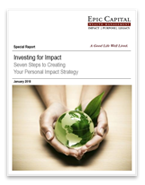Understanding Risk
Jun 2, 2023
 Few terms in personal finance are as important, or used as frequently, as “risk.” Nevertheless, few terms are as imprecisely defined. Generally, when financial advisors or the media talk about investment risk, their focus is on the historical price volatility of the asset or investment under discussion.
Few terms in personal finance are as important, or used as frequently, as “risk.” Nevertheless, few terms are as imprecisely defined. Generally, when financial advisors or the media talk about investment risk, their focus is on the historical price volatility of the asset or investment under discussion.
What you probably already know about risk
Even though you might never have thought about the subject, you’re probably already familiar with many kinds of risk from life experiences. For example, it makes sense that a scandal or lawsuit that involves a particular company will likely cause a drop in the price of that company’s stock, at least temporarily. If one car company hits a home run with a new model, that might be bad news for competing automakers. In contrast, an overall economic slowdown and stock market decline might hurt most companies and their stock prices, not just in one industry.
However, there are many different types of risk to be aware of. Volatility is a good place to begin as we examine the elements of risk in more detail.
What makes volatility risky?
Suppose that you had invested $10,000 in each of two mutual funds 20 years ago, and that both funds produced average annual returns of 10 percent. Imagine further that one of these hypothetical funds, Steady Freddy, returned exactly 10 percent every single year. The annual return of the second fund, Jekyll & Hyde, alternated — 5 percent one year, 15 percent the next, 5 percent again in the third year, and so on. What would these two investments be worth at the end of the 20 years?
It seems obvious that if the average annual returns of two investments are identical, their final values will be, too. But this is a case where intuition is wrong. If you plot the 20-year investment returns in this example on a graph, you’ll see that Steady Freddy’s final value is over $2,000 more than that from the variable returns of Jekyll & Hyde. The shortfall gets much worse if you widen the annual variations (e.g., plus-or-minus 15 percent, instead of plus-or-minus 5 percent). This example illustrates one of the effects of investment price volatility: Short-term fluctuations in returns are a drag on long-term growth.
Note: This is a hypothetical example and does not reflect the performance of any specific investment. This example assumes the reinvestment of all earnings and does not consider taxes or transaction costs.
Although past performance is no guarantee of future results, historically the negative effect of short-term price fluctuations has been reduced by holding investments over longer periods. But counting on a longer holding period means that some additional planning is called for. You should not invest funds that will soon be needed into a volatile investment. Otherwise, you might be forced to sell the investment to raise cash at a time when the investment is at a loss.
Other types of risk
Here are a few of the many different types of risk:
- Market risk: This refers to the possibility that an investment will lose value because of a general decline in financial markets, due to one or more economic, political, or other factors.
- Inflation risk: Sometimes known as purchasing power risk, this refers to the possibility that prices will rise in the economy as a whole, so your ability to purchase goods and services would decline. For instance, your investment might yield a 6 percent return, but if the inflation rate rises to double digits, the invested dollars that you got back would buy less than the same dollars today. Inflation risk is often overlooked by fixed income investors who shun the volatility of the stock market completely.
- Interest rate risk: This relates to increases or decreases in prevailing interest rates and the resulting price fluctuation of an investment, particularly bonds. There is an inverse relationship between bond prices and interest rates. As interest rates rise, the price of bonds falls; as interest rates fall, bond prices tend to rise. If you need to sell your bond before it matures and your principal is returned, you run the risk of loss of principal if interest rates are higher than when you purchased the bond.
- Reinvestment rate risk: This refers to the possibility that funds might have to be reinvested at a lower rate of return than that offered by the original investment. For example, a five-year, 3.75 percent bond might mature at a time when an equivalent new bond pays just 3 percent. Such differences can in turn affect the yield of a bond fund.
- Default risk (credit risk): This refers to the risk that a bond issuer will not be able to pay its bondholders interest or repay principal.
- Liquidity risk: This refers to how easily your investments can be converted to cash. Occasionally (and more precisely), the foregoing definition is modified to mean how easily your investments can be converted to cash without significant loss of principal.
- Political risk: This refers to the possibility that new legislation or changes in foreign governments will adversely affect companies you invest in or financial markets overseas.
- Currency risk (for those making international investments): This refers to the possibility that the fluctuating rates of exchange between U.S. and foreign currencies will negatively affect the value of your foreign investment, as measured in U.S. dollars.
The relationship between risk and reward
In general, the more risk you’re willing to take on (whatever type and however defined), the higher your potential returns, as well as potential losses. This proposition is probably familiar and makes sense to most of us. It is simply a fact of life — no sensible person would make a higher-risk, rather than lower-risk, investment without the prospect of receiving a higher return. That is the tradeoff. Your goal is to maximize returns without taking on an inappropriate level or type of risk.
Understanding your own tolerance for risk
The concept of risk tolerance is twofold. First, it refers to your personal desire to assume risk and your comfort level with doing so. This assumes that risk is relative to your own personality and feelings about taking chances. If you find that you can’t sleep at night because you’re worrying about your investments, you may have assumed too much risk. Second, your risk tolerance is affected by your financial ability to cope with the possibility of loss, which is influenced by your age, stage in life, how soon you’ll need the money, your investment objectives, and your financial goals. If you’re investing for retirement and you’re 35 years old, you may be able to endure more risk than someone who is 10 years into retirement, because you have a longer time frame before you will need the money. With 30 years to build a nest egg, your investments have more time to ride out short-term fluctuations in hopes of a greater long-term return.
Reducing risk through diversification
Don’t put all your eggs in one basket. You can potentially help offset the risk of any one investment by spreading your money among several asset classes. Diversification strategies take advantage of the fact that forces in the markets do not normally influence all types or classes of investment assets at the same time or in the same way (though there are often short-term exceptions). Swings in overall portfolio return can potentially be moderated by diversifying your investments among assets that are not highly correlated — i.e., assets whose values may behave very differently from one another. In a slowing economy, for example, stock prices might be going down or sideways, but if interest rates are falling at the same time, the price of bonds likely would rise. Diversification cannot guarantee a profit or ensure against a potential loss, but it can help you manage the level and types of risk you face.
In addition to diversifying among asset classes, you can diversify within an asset class. For example, the stocks of large, well-established companies may behave somewhat differently than stocks of small companies that are growing rapidly but that also may be more volatile. A bond investor can diversify among Treasury securities, more risky corporate securities, and municipal bonds, to name a few. Diversifying within an asset class helps reduce the impact on your portfolio of any one particular type of stock, bond, or mutual fund.
Evaluating risk: where to find information about investments
You should become fully informed about an investment product before making a decision. There are numerous sources of information. In addition to the information available from the company offering an investment — for example, the prospectus of a mutual fund — you can find information in third-party business and financial publications and websites, as well as annual and other periodic financial reports. The Securities and Exchange Commission (SEC) also can supply information.
Third-party business and financial publications can provide credit ratings, news stories, and financial information about a company. For mutual funds, third-party sources provide information such as ratings, financial analysis, and comparative performance relative to peers. If you’d like to learn more about Epic Capital’s approach to risk, click here.
Note: Before investing in a mutual fund, carefully consider its investment objectives, risks, fees and expenses, which can be found in the prospectus available from the fund; read it and consider it carefully before investing.
For more insights and resources, be sure to sign up for our Weekly Market Commentary. Follow our YouTube channel where we regularly post our Epic Market Minute videos. Follow us on LinkedIn, or like us on Facebook. And as always, please don’t hesitate to reach out to a dedicated service professional at Epic Capital.
Tags: charlotte NC, financial advisor, financial advisor charlotte nc, Financial Help, Financial Planner Charlotte NC, Retirement Planning, Risk Management
More Insights
Key Takeaways Volatility came back with a vengeance this week as selling pressure in the mega cap space dragged down the broader market. Counterbalancing weakness in these heavyweight names poses a challenge for the rest of the market. Overbought conditions can also be blamed for the recent weakness. The S&P 500 reached a 14.9% premium … Continue reading “Market Update – Assessing the Technical Damange”
Life insurance can be an excellent tool for charitable giving. Not only does life insurance allow you to make a substantial gift to charity at relatively little cost to you, but you may also benefit from tax rules that apply to gifts of life insurance.
When you think of Social Security, you probably think of retirement. However, Social Security can also provide much-needed income to your family members when you die, making their financial lives easier. Your family members may be eligible to receive survivor benefits if you worked, paid Social Security taxes, and earned enough work credits. The number … Continue reading “Social Security Survivor Benefits”
Information vs. instinct. When it comes to investment choices, many people believe they have a “knack” for choosing good investments. But what exactly is that “knack” based on? The fact is, the choices we make with our assets can be strongly influenced by factors, many of them emotional, that we may not even be aware … Continue reading “Making Investment Choices”
As a business owner, you should carefully consider the advantages of establishing an employer-sponsored retirement plan. Generally, you’re allowed certain tax benefits for establishing an employer-sponsored retirement plan, including a tax credit for establishing the plan and a deduction for contributions you make. In return, however, you’re required to include certain employees in the plan, … Continue reading “Retirement Plans for Small Businesses”
Services
Epic Capital provides the following comprehensive financial planning and investment management services: Learn More >


 Top of Page
Top of Page











